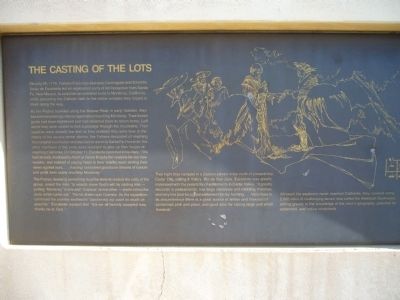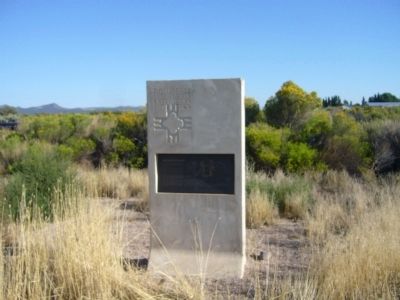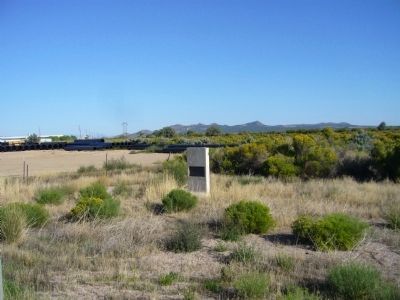Near Cedar City in Iron County, Utah — The American Mountains (Southwest)
The Casting of the Lots
As the Padres traveled along the Beaver River in early October, they became increasingly discouraged about reaching Monterey. Their Indian guide had been frightened and had deserted them to return home. Left alone they were unable to find a passage through the mountains. Their supplies were already low and as they realized they were now at the mercy of the severe winter storms, the Fathers despaired of reaching their original destination and decided to return to Santa Fe. However, the other members of the party were reluctant to give up their hopes of reaching California. On October 11, Escalante recorded in his diary, "We had already disclosed to them at Santa Brigida the reasons for our new resolve, and instead of paying heed to their validity were setting their views against ours,...[having] conceived grandiose dreams of honors and profit from solely reaching Monterey."
The Padres, knowing something must be done to restore the unity of the group, asked the men "to search anew God's will by casting lots - putting "Monterey" on one and "Cosnina" on the other - and to follow the route which came out." The lot drawn was Cosnina. As the expedition continued the journey southward "quickening our pace as much as possible," Escalante rejoiced that "this we all heartily accepted now, thanks be to God."
That night they camped in a pasture eleven miles north of present-day Cedar City, calling it Valley Rio de San Jose. Escalante was greatly impressed with the possibility of settlements in Cedar Valley. "It greatly abounds in pasturelands, has large meadows and middling marshes, and very fine land for a good settlement for dry-farming....Very close to its circumference there is a great source of timber and firewood of ponderosa pine and pinon, and good sites for raising large and small livestock."
Although the explorers never reached California, they covered some 2,000 miles of challenging terrain now called the American Southwest, adding greatly to the knowledge of the area's geography, potential for settlement, and native inhabitants.
Topics and series. This historical marker is listed in this topic list: Exploration. In addition, it is included in the Dominguez y Escalante Expedition series list. A significant historical month for this entry is July 1852.
Location. 37° 41.115′ N, 113° 8.607′ W. Marker is near Cedar City, Utah, in Iron County. Marker is on Utah Route 56 at milepost 57, on the right when traveling west. note: Marker is set back from highway and is not easy to see in the tall grass and shrubs. Touch for map. Marker is in this post office area: Cedar City UT 84720, United States of America. Touch for directions.
Other nearby markers. At least 8 other markers are within 5 miles of this marker, measured as the crow flies. Fort Cedar (approx. 3˝ miles away); The Founding of Southern Utah University (approx. 3.9 miles away); Hamilton Fort (approx. 4 miles away); Ellen (Nellie) Purcell Unthank (approx. 4.2 miles away); Old Brickyards (approx. 4.4 miles away); Cedar City Historic Pioneer Cemetery Wall (approx. 4.4 miles away); Pioneer Cabin (approx. 4.4 miles away); Cedar City Railroad Depot (approx. 4.4 miles away). Touch for a list and map of all markers in Cedar City.
Credits. This page was last revised on June 16, 2016. It was originally submitted on September 15, 2012, by Bill Kirchner of Tucson, Arizona. This page has been viewed 867 times since then and 57 times this year. Photos: 1, 2, 3. submitted on September 15, 2012, by Bill Kirchner of Tucson, Arizona. • Bill Pfingsten was the editor who published this page.


